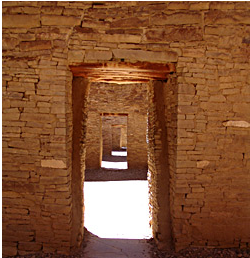Publication Date
5-1-2009
Abstract
This dissertation attempts to identify ecological relationships useful for understanding large-scale patterns in human-environment interaction that can be applied to archaeological studies. It uses three established bodies of theory to understand ecological constraints and life history tradeoffs, applying the same basic framework to human adaptations and the demographic trends of other mammals. First, a model from optimal foraging theory (the marginal value theorem), which posits a tradeoff between resource availability and resource processing, is applied to zooarchaeology to understand human butchery patterns. Humans tend to butcher prey according to the predictions of the model in both ethnographic and archaeological settings: they process carcasses more intensively when prey are rare. Moreover, evaluation of the statistical and taphonomic factors that could affect prehistoric faunal data demonstrates that even coarse-measures of butchery intensity can uncover the predicted tradeoff. Life history theory can link energetic and environmental constraints to demographic parameters and is therefore useful for understanding the unique features of humans that may have been responsible for their geographic expansion in addition to how their prey might adjust to changes in mortality or energy availability. Lifetime reproductive effort captures the tradeoffs among adult size, lifespan, and reproductive effort to yield an aggregate dimensionless measure highly useful for summarizing the life histories of different organisms for cross-species comparison. The second study in this dissertation examines lifetime reproductive effort to see if humans have diverged from most mammals with respect to this important life history metric. This measure shows that while we (humans) differ in many individual life history attributes, in the aggregate we converge on the same optimal solution as other organisms, given simple constraints on production and mortality. This suggests that some of the unique features of humans (post-reproductive lifespans, extensive food-sharing, and long juvenile periods) have not caused a divergence from the factors constraining other optimal life histories. While humans have re-organized the lifespan, allocation of energy to reproduction during the lifespan is nonetheless constrained by some fundamental ecological constraint. This helps place human life history evolution in a broader context for understanding the causes and consequences of the factors that allowed humans to diverge from other mammals. General patterns between body size, abundance, and geographical area exist in ecology that can help archaeologists understand how prey respond demographically to changes in resource availability and/or predation pressure. Following this motivation the third study uses population viability analysis (PVA) to explore the causes of relative extinction risk among terrestrial mammals. The model predicts that relative extinction risk is a peaked function of body mass such that risk is minimized at about 100 grams, which is near the modal size in continental faunas and the size that species colonizing islands from continental mainlands converge upon. This suggests that the model captures a key feature of the dynamics governing the evolution of size and probability of extinction. It also applies to life history evolution by demonstrating that variation in growth rate, population density, and generation length interact such that an optimal strategy exists for staying in the evolutionary game' (i.e., avoiding extinction). Debates about the loss of Pleistocene megafauna center on climate and human hunting as opposing causes. The model provides modest support for the view that humans may be responsible for the bias towards large body size in the extinct species. The model is also useful for understanding the demographic attributes of human prey, generally, and has many further applications for understanding life history evolution and population stability in humans and other mammals. Across the three studies a number of useful tools are developed for identifying large-scale tradeoffs that can be used to understand human population dynamics, foraging behavior, and their implications for resource use and geographic range expansion. The same set of techniques is also useful for uncovering the connections between human attributes and those of the species they influence via predation and/or the altering of ecosystems. These techniques are valuable theoretical developments for the building of a more robust environmental and/or ecological archaeology (anthropology).'
Keywords
Ecological Archaeology, Marginal value theorem, Lifetime reproductive effort, Population viability analysis
Document Type
Dissertation
Language
English
Degree Name
Anthropology
Level of Degree
Doctoral
Department Name
Anthropology
First Committee Member (Chair)
Boone, James
Second Committee Member
Huckell, Bruce
Third Committee Member
Pearson, Osbjorn
Fourth Committee Member
Brown, James
Recommended Citation
Burger, Oskar. "Ecological Constraints and Life History Tradeoffs among Human Foragers and their Prey." (2009). https://digitalrepository.unm.edu/anth_etds/10


Comments
This dissertation has three volumes. Volumes 2 and 3 may be downloaded at the links at the bottom of this page.